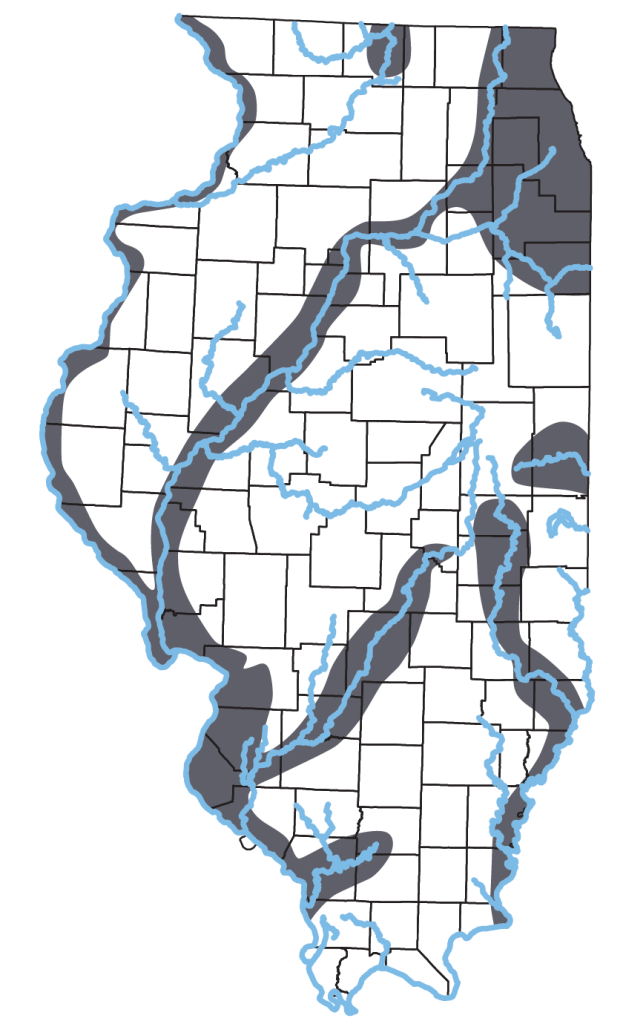Graptemys geographica (Le Sueur, 1817)
Key Characters: Small, isolated, somewhat triangular spot or mark behind eye; carapace with sawtooth rear margin and low midback keel; vertebral knobs or spines distinct in juveniles, small in adult males, usually lost in old females.
Similar Species: False Map Turtle, Ouachita Map Turtle. See Key to Adult Turtles of Illinois for help with identification.
Subspecies: None recognized.
Description: Medium-sized (up to 24 cm CL) turtle. Carapace olive brown with network of yellow lines (resembling a road map); some lines encircle dark brown smudges. Vertebral knobs and keel dark brown. Plastron pale yellow with dark pigment bordering scute seams. Female larger than male and with broader head. Male with elongate foreclaws and cloacal opening behind end of carapace.
Habitat: Slow-moving stretches and backwaters of rivers as well as large lakes.
Natural History: Basks and dives into water at the slightest disturbance. Eats snails, clams, crayfish, and insects, which it crushes with broad surfaces of jaws. Female lays 2-3 clutches of about 12 ellipsoidal, leathery-shelled eggs (ca. 35 x 22 mm) between late May and early July and buries them in soft soil or sand.
Status: Locks and dams and dredging of upper Mississippi River have created excellent habitat pools dotted with sand bars. Most abundant in northern half of state.
Etymology: Graptemys – grapho (Greek) for write; emydo (Greek) for ‘freshwater tortoise’; geographica – geo (Greek) for earth; grapho (Greek) for write.
Original Description: Le Sueur, C.A. 1817. An account of an American species of tortoise, not noticed in the systems. Journal of the Natural Academy of Sciences Philadelphia. 1(1):86-88.
Type Specimen: Not designated.
Type Locality: “marsh, on the borders of Lake Erie”
Original Name: Testudogeographica Le Sueur, 1817
Nomenclatural History: Emys megacephala (Holbrook. 1836. ) is a junior synonym. The Northern Map Turtle has been transferred to several genera, including Clemmys, Emys, Malaclemys, Malaclemmys, Malacoclemmys, and Terrapene.


